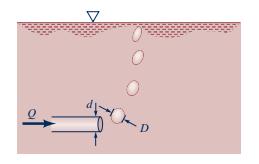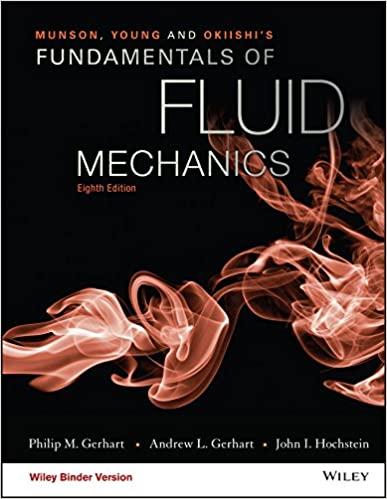Air bubbles discharge from the end of a submerged tube as shown in Fig. P7.57. The bubble
Question:
Air bubbles discharge from the end of a submerged tube as shown in Fig. P7.57. The bubble diameter, \(D\), is assumed to be a function of the air flowrate, \(Q\), the tube diameter, \(d\), the acceleration of gravity, \(g\), the density of the liquid, \(ho\), and the surface tension of the liquid, \(\sigma\).
(a) Determine a suitable set of dimensionless variables for this problem.
(b) Model tests are to be run on the Earth for a prototype that is to be operated on a planet where the acceleration of gravity is 10 times greater than that on Earth. The model and prototype are to use the same fluid, and the prototype tube diameter is 0.25 in. Determine the tube diameter for the model and the required model flowrate if the prototype flowrate is to be \(0.001 \mathrm{ft}^{3} / \mathrm{s}\).
Figure P7.57

Step by Step Answer:

Munson Young And Okiishi's Fundamentals Of Fluid Mechanics
ISBN: 9781119080701
8th Edition
Authors: Philip M. Gerhart, Andrew L. Gerhart, John I. Hochstein





